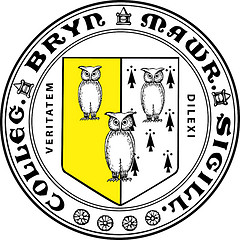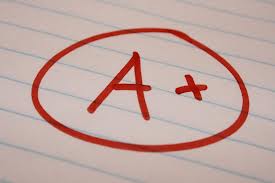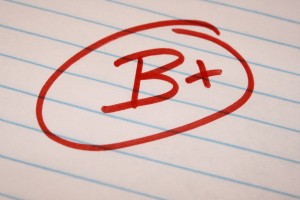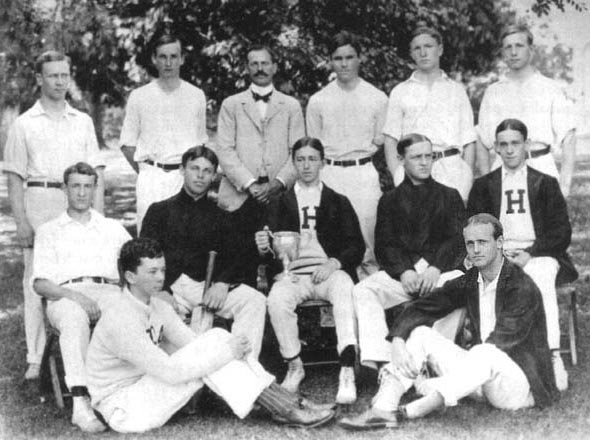IS AN HONOR CODE RELEVANT IN THIS DAY AND AGE?
By Emilia Otte
Recent cheating scandals have caused some of the most prestigious colleges in the United States to take steps toward implementing an honor code.
At Harvard University, 125 students were suspected of collaborating on a take-home final exam in May of 2012, according to the New York Times.
Eight months later, multiple allegations of cheating on exams spread across ColumbiaUniversity and its sister school, BarnardCollege.
In response to these widely publicized events, Harvard faculty voted last May to instate the first honor code in the history of the university. The code outlines expectations of academic integrity among students. According to The Spectator, The Columbia College Student Council also voted unanimously for the introduction of both an honor pledge and an honor code on campus.
However, students and professors alike remain skeptical: Will a written code of values really be enough to keep students honest?
* * *
For students at Bryn Mawr and HaverfordColleges, two small liberal arts colleges located in Bryn Mawr and Haverford, PA, respectively, the honor code is a fixture in their daily lives. Dating back to the 1890s, the honor code is one of these schools’ oldest traditions. It calls for integrity in both academic and social settings.
 Prospective students coming onto either campus for the first time might be surprised to see iPhones lying across tables with no owner in sight, bikes left outside without locks, and laundry left unattended. This is proof that the honor code extends beyond the classroom and into the greater community.
Prospective students coming onto either campus for the first time might be surprised to see iPhones lying across tables with no owner in sight, bikes left outside without locks, and laundry left unattended. This is proof that the honor code extends beyond the classroom and into the greater community.
In a survey done of 295 Bryn Mawr and Haverford students, 72% said that having an honor code enhances their college experience “a lot”.
Victoria Tamura, a first-year at Bryn Mawr, said of the honor code: “It made me feel like the place was a lot more welcoming. I guess it affected my view on the community.”
She continued, “I liked the fact that we were trusted. I like the flexibility that the honor code gives students here.”
Students who participated in the survey cited a variety of positive things about the honor code. Many students appreciate the ability to self-schedule their final exams, the feelings of trust and safety the code promotes in the community, and the freedom to make decisions “like adults”.
“The thing I like best about the Honor Code is actually the social part,” said Veronica Benson-Moore, a Bryn Mawr sophomore. “I feel more comfortable knowing that people are more likely to accept my expression of my feelings as well as more likely to tell me if I’ve offended them.”
Francesca Felder, a sophomore at Haverford, believes that the honor code fosters a unique trust between students and professors. “Professors can take students at their word and not be suspicious that students are cheating or trying to manipulate them,” she said, “Students can trust that a professor will believe what they say.”
Haverford sophomore Samuel Walter agrees. “I enjoy the trust it creates between students and teachers,” he said. “I also find that it encourages learning for learning’s sake rather than fostering cut throat competition over grades.”
Although most students have a basic knowledge of its contents, only 22% of Bryn Mawr students have read the code cover-to-cover, according to the survey, which was emailed to Haverford and Bryn Mawr students in December.
So how do Bryn Mawr students know if they are following the rules?
“Oh, that’s such a scary question,” said Claire Craig, a sophomore at Bryn Mawr, when asked whether she follows the honor code. “I guess I do. I hope I do. I try to.”
Rather than struggle through the pages of mundane procedures and antiquated language, many students choose to adhere to their own, simpler, variation of the code.
“I adhere to the verbal honor code that I’ve heard; as in don’t cheat, don’t steal things- that stuff,” said Bryn Mawr sophomore Lauren Sauers.
“I take part in the supportive community here, and I’ve never stolen anything, or cheated since I’ve been here,” said Rosemary Ryden Cohen, a Haverford first-year.
Students at Haverford are far more likely to have read their honor code, as the school requires all first-years to be familiar with it. Out of the 61 Haverford students who completed the survey, two-thirds had read the full text of the honor code, and all of them had read at least parts of it.
* * *
In general, the words “respect”, “responsibility”, “trust” and “freedom” seem to highlight students’ understanding of the honor code at both colleges.
Courtney Bria Ahmed, a first-year at Haverford, explained that the honor code “didn’t just set forth rules, it set forth hopes and expectations.”
Josh Nadel, a senior at Haverford, said that he has read the honor code and “abides by the spirit of the Honor Code- the concepts of trust, concern, and respect for the community.”
While students feel drawn to the “spirit” of the honor code, the “letter” of the code sometimes falls by the wayside. If the violation is serious enough, students are called to account for their actions before the honor board- a panel of students and faculty members that review the case and determine the proper penalty.
According to Melanie Bahti, president of the Bryn Mawr honor board, Bryn Mawr’s honor board hears roughly five to eight cases per semester. Haverford sees about the same number- an average of 13 or 14 cases per year. The academic violations span all class years, course levels, and departments. The overwhelming majority of cases deal with plagiarism. Punishments include receiving a failing grade on the assignment in question, having to go to the WritingCenter to learn proper citation methods, or writing a letter to the community. The punishments are directed toward reintegrating offenders into the community rather than forcing them out.
The number of students that stand before the honor board represents a tiny percentage of the Haverford and Bryn Mawr communities. In the online survey, however, 13% of students admitted to violating the honor code themselves, and 27% of students have witnessed a violation by one of their peers.
“You see minor infringements of the social honor code…especially at parties,” said Bryn Mawr senior Anna Kalinsky. “[Stuff] gets broken, people swipe in strangers.”
Other common problems include stealing food, laundry detergent, or dishes from the dining hall, looking up answers or taking extra time on a take-home exam, collaborating with friends on a solo homework assignment, discussing grades and tests openly, and breaking confidentiality.
“Somebody ate my birthday cake and left the dirty fork in the sink,” recalled Alexandra Krusinski, a junior at Bryn Mawr.
* * *
Out of 107 students who claim to have witnessed violations of the honor code, only seven brought the issue to the attention of the Honor Code committee. Thirty-five percent preferred to confront the offender themselves, and a whopping 62% took no action at all.
While the honor code encourages constructive dialogue, the reality is that many students feel extremely uncomfortable at the idea of confronting their peers.
“I’m really bad at confrontation in general,” explained Amala Someshwar, a Bryn Mawr first-year who chose not to report the violation she witnessed.
Responders to the online survey also expressed concern that taking action would be ‘making too big a deal’ out of minor incidents, while others feel that the result of the confrontation is not worth the anxiety that goes along with speaking up.
Haverford sophomore Francesca Felder admitted to feeling “rather unequipped to confront people. There was recently an experience where a friend of mine was hurt by something someone said, and decided not to confront him about it because ‘it won’t make a difference’.”
She continued: “I wish there was more conversation about exactly how to confront people and what to expect from it.”
James Truitt, another sophomore at Haverford, agreed that the code could be confusing when it comes to the issue of confrontation.
“There’s a lot of questions in my head about confrontation- at what point should I confront someone about something, and at what point should I let it go? Most times, with any confrontation, I don’t want to go through the hassle of confronting them about it. Is that a violation of the code?” he asked. “When does confrontation become an attempt to impose my value-system on others?”
Even those who readily confront their peers are reluctant to bring their case to the honor board, preferring instead to give the offending party the benefit of the doubt.
“I didn’t think they were thinking coherently,” said Alexa Gjonca, a sophomore at Bryn Mawr, about students she caught stealing.
“I know people who have, like, talked to the honor board, but I feel like… most of the time, people aren’t consciously violating the code…they don’t know all the rules or they’re just really not aware of what they’re doing in a given moment,” said Ava Hawkinson, another Bryn Mawr sophomore.
She feels that confrontation is a better course of action. “Usually when you remind someone [that they are violating the honor code] they’ll just be like ‘oh, let me modify my behavior.’ That’s the optimal situation.”
* * *
Honor codes have a long and proud history. They originated in an era when knights in shining armor and samurai went to battle for their countries. In those times, a code of ethics was something to be followed at the expense of all else, and honor was a principle worth dying for.
In the context of a 21st century college campus, is such a code still relevant?
Celeste Ledesma, a sophomore at Bryn Mawr, believes so. “The honor code is necessary, because at this point in our college education, we don’t know any differently.”
Eighty-six percent of respondents on the online survey agreed that the honor code is a vital factor in keeping the community honest.
A few students presented a different and compelling argument: that, rather than adjusting their actions to fit the code, students who already held themselves to certain standards chose a college with similar values.
In fact, 75% of Haverford respondents and 46% of Bryn Mawr respondents online said that the honor code influenced their decision to apply to the school.
“I wanted a trusting and safe environment and I liked the degree of independence and responsibility the honor code awards,” said Ariel Dineen, a Haverford sophomore.
“I saw it as a marker of a school that cared about good values,” said Adam Stambor, a first-year at Haverford. “A group of students who all feel the honor code is important…I believed would make a good group of people- moral and ethical and honest.”
Therefore, does the code influence good decision-making, or does it simply bring honest people together?
“Is it ‘necessary’? No, probably not,” said Christopher Hedad, a sophomore at Haverford. “At Haverford and Bryn Mawr, where an Honor Code exists, I’d like to think that even if the text of the Honor Code went away, the values would still persist.”
Either way, Hedad points out, there is “something special” about having an honor code. The vast majority of Bryn Mawr and Haverford students feel that it is a positive force in their lives, and a far better solution than having the administration crack down.
A few small changes could go a long way toward making the code more effective. Clarifying some of the more confusing aspects of the code, such as rules about confrontation, discussion of grades, and collaboration, would help more students understand what actions are acceptable. Shortening the code, or reorganizing it into bullet points, might inspire more students to read the document, particularly at Bryn Mawr, where the code is a formidable 12 pages in length.
* * *
Even without these modifications, 95% of the students surveyed believe that the honor code has at least some effect on student behavior, and 41% believe it has a great deal of impact.
“We see the honor code as a privilege and a responsibility, and are willing to do the work necessary to protect its benefits,” commented one Bryn Mawr senior on the online survey.
Said Bryn Mawr sophomore Teresa Wang: “I think the honor code is an idea that’s embedded in the entire community. It’s how the Bryn Mawr and Haverford students ought to live throughout their entire college life and even carry…into society once they graduate.”
Perhaps Haverford junior Kelsey Owyang best summed up how Bryn Mawr and Haverford students feel about their code and its effect on the school community.
“Yes, it could be strengthened and more comprehensive; yes, it has problems”, she said, “But on a fundamental level I think it affects our behavior a lot — the atmosphere here is unlike any other learning environment-or living environment-I’ve experienced.”
This story was a class project for ART264W students at Bryn Mawr College and it involved numerous face-to-face interviews plus an online survey of students at both colleges. Additional reporting was done by Emilia Otte, who also wrote the story.

 It would be natural to assume that grades, and their anticipation, play a large role in this stress and worry, even though both colleges they do not emphasize grades and discourage their students against discussing them too much. This is done in the name of creating a less stressful learning environment.
It would be natural to assume that grades, and their anticipation, play a large role in this stress and worry, even though both colleges they do not emphasize grades and discourage their students against discussing them too much. This is done in the name of creating a less stressful learning environment.








